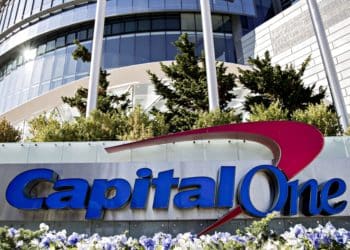How Westlake Financial Reduced Operating Expenses 15% in One Year

Executives at Westlake Financial Services realized last year that the company’s operating costs were too high and that key performance indicators were “out of whack,” Ian Anderson, group president of Westlake Financial Services, told the Center for Auto Finance Excellence. That’s when the lender decided to create VisorBot, an automated employee-supervision system, and to make operational changes that ultimately decreased operating expenditures to 4% of overall income from 4.75%, a 15% decline.
VisorBot is a proprietary supervision system for employees, tasked with helping reduce performance variance on a day-to-day basis, Anderson explained. The variance could be something as simple as monitoring employees coming into work at different times in the morning, to more essential tasks like tracking the number of loans being approved or verified. For instance, if an employee comes to work at inconsistent times every day, VisorBot asks for an explanation of the discrepancy. To avoid having to answer the bot daily and have upper management take notice of the variance, the employee typically starts to come in at a consistent time each day.
“People love it,” Anderson said about VisorBot. “Before, there was such a big variance from the top performers to the bottom performers … but now we’ve been able to bridge that gap.” He reasoned that so long as people are fulfilling their responsibilities, they don’t have to answer to VisorBot, and as a result, employees have become more productive.
Since implementing VisorBot, Westlake has reduced origination staff — including verification, funding, and credit analysts — to 105 people in April from 155 people in April 2017. During that time, Westlake’s outstandings climbed 23.6% to $3.9 billion.
Essentially, VisorBot has helped increase productivity per employee, thereby boosting revenue per employee. In other words, Westlake could reduce origination staff without seeing a decline in volume. As such, Westlake reallocated those employees to other areas , such as the collection and repossession departments.
To enhance the appeal of the bot, Westlake is working on developing a point system that enables employees to accrue points based on performance and receive cash rewards.
With operating expenses now at 4%, the goal is to bring the ratio down to 3.25% by yearend, Anderson said. “After that, the goal is to bring is further down [below 3%],” he added.
Westlake is also using artificial intelligence to help take large swaths of data and distill it into information that can be further used to inform the company on how to reduce operational variance. Anderson declined to specify how Westlake is using machine learning AI but said it was a “big initiative” with three people focused on the project.
Ultimately, Anderson’s goal is to reduce costs and reallocate the savings to growing the business, he said.














